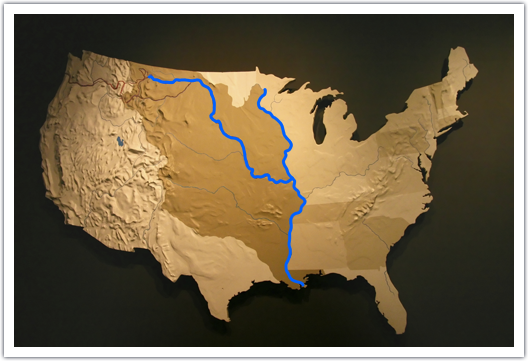This painting by George Catlin shows deckhands struggling to help the steamboat Yellowstone, which has run aground on a sandbar on the notoriously unpredictable Missouri. Between 1832 and 1880, hundreds of steamboats would ply the turbulent waters of the Big Muddy, as the Missouri is still known to its midwestern neighbors.

Artist George Catlin ascended the Missouri
River onboard the American Fur Company's paddle wheeler
Yellowstone, which made the first attempt to open the Missouri
River to steam travel in 1832. At the same time Catlin was
enroute to the Mandan Villages, Maximillian and Karl Bodmer were
setting sail for the New World from Rotterdam. (Bodmer, the finest
artist to paint the American West in it's 'natural' state, would
spend the next ten years of his life devoted to the work produced
by this expedition.)
Click here for more on riverboats
Over the course of the next fifty
years, hundreds of steamboats would ply the turbid waters of the
Missouri. By the 1880s, the dangerous steamboats (hundreds of
them blew up when their boilers ruptured, or their hulls were
caught by snags and sandbars) were replaced by trains.
In the 1830s, the average trip
upstream aboard a steamboat to Fort Pierre, in the Montana
territory, took seventy days, while the return trip would take
fifteen.
The amount of wood required to fire
the ship's boilers for one voyage was estiated to be 1,700 mature
oak trees. TheYellowstone alone, in six and a half years - or
2,000 days on the river - burned forty thousand trees to fire its
boilers. Nvertheless, steamboats were the engines of Manifest
Destiny. Over a fifty year period, they would destroy the
great oak forests of the plains.
Related People
Related Events